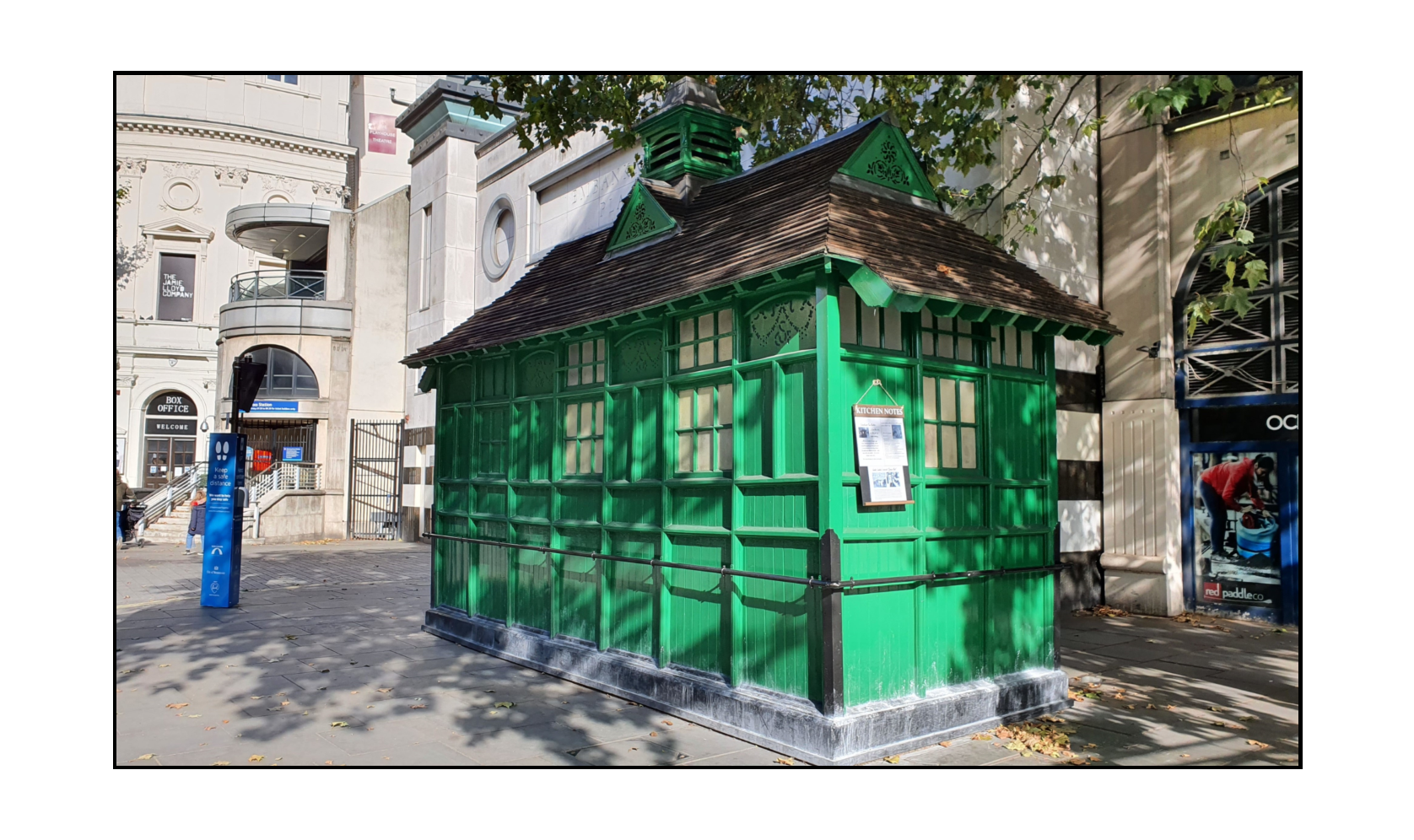
I take a look at this once-common sight on London’s streets, now endangered and particularly vulnerable in the Covid era.
In the mid-19th century, owners of horse-drawn hansom cabs were caught between a rock and a hard place. These vehicles had no protection from the elements – partial protection would only come with petrol-fueled hackney carriages in 1903, and full protection with the FX4 London taxi in 1958. Legally, they couldn’t leave their cab on a rank unattended, but if they parked away from a rank to get to a pub or cafe for warmth and food they risked both the theft of their cab and the temptation to have a wee nip or two of something stronger than tea.
In 1875, Captain George Armstrong, editor of The Globe newspaper, sought a cab in a raging blizzard to take him from his home in St. John’s Wood, North West London, to his place of work in Fleet Street. More accurately, a servant went out in the blizzard risking hypothermia while Armstrong remained inside, no doubt next to a roaring fire, but that is neither here nor there. And there were certainly cabs – just no drivers; they were all drunk in the pub, as the servant discovered.
Armstrong came up with the idea of shelters, where the cabbies could safely get warm and buy non-alcoholic beverages close to a parking area. As a newspaperman he was in a better position than most to elicit help from the great and the good: The result was the Cabmen’s Shelter Fund (‘CSF’), created in 1875 by the Earl of Shaftesbury and others, with the Duke of Westminster and the Prince of Wales (later King Edward VII) contributing.
The first shelter to open was – surprise – in St Johns Wood, which must have come as a relief to Captain Armstrong’s servants. The shelters were legally restricted in size to that of a horse and cart as they typically stood in the road, but tiny kitchens were somehow introduced in 1882. From this the operator could produce breakfasts and lunch staples, or cook the cabbies’ own food for a small charge. Rooftop vents, which make the shelters so distinctive, were necessary due to the wood-burning stoves employed. At a pinch, around a dozen cabbies could fit inside. The shelter interiors have remained the private domain of licensed London cabdrivers, i.e. those who have passed ‘the Knowledge’ test. However, all surviving examples come with a serving hatch to the outside, which can be used by us common folk and even (whisper it quietly) Uber drivers, as well as licensed cabbies in a hurry.
The earliest shelters were by Gibson & Maitland, then by George Aitchison, but none of these survive. In 1881 Harvey & Clarke became appointed architects to the CSF, and Maximilian Clarke is responsible for the design we see today, albeit with some subsequent modifications. All surviving examples are painted in ‘Buckingham Green’, presumably to blend in with trees and bushes, although early monochrome photographs suggest paler colours have been used in the past.
A sign stating the rules still hangs inside every shelter. Along with the predictable (e.g. that prices must be displayed, and only licensed cabbies are allowed inside) there are stern warnings that ‘Card playing, betting or gambling’ are strictly prohibited, and that the drivers of the first two cabs on any rank must stay with their vehicles. However, most of the shelters remain near to parking areas for off-duty cabbies in line with the original intention of Armstrong, so they can eat their meal in peace.
Shelter numbers reached a high of 61 (Weinreb claims 64) when the last was opened in 1914, but they were flimsy, and their positioning made them vulnerable to traffic collision, bomb damage in the Second World War and postwar road improvement schemes that swept away roadside parking. Furthermore, once cabs became weather-proof and warm, shelters lost much of their raison d’être. Now only 13 – including one in St John’s Wood, close to the original site – survive. All are listed grade II.
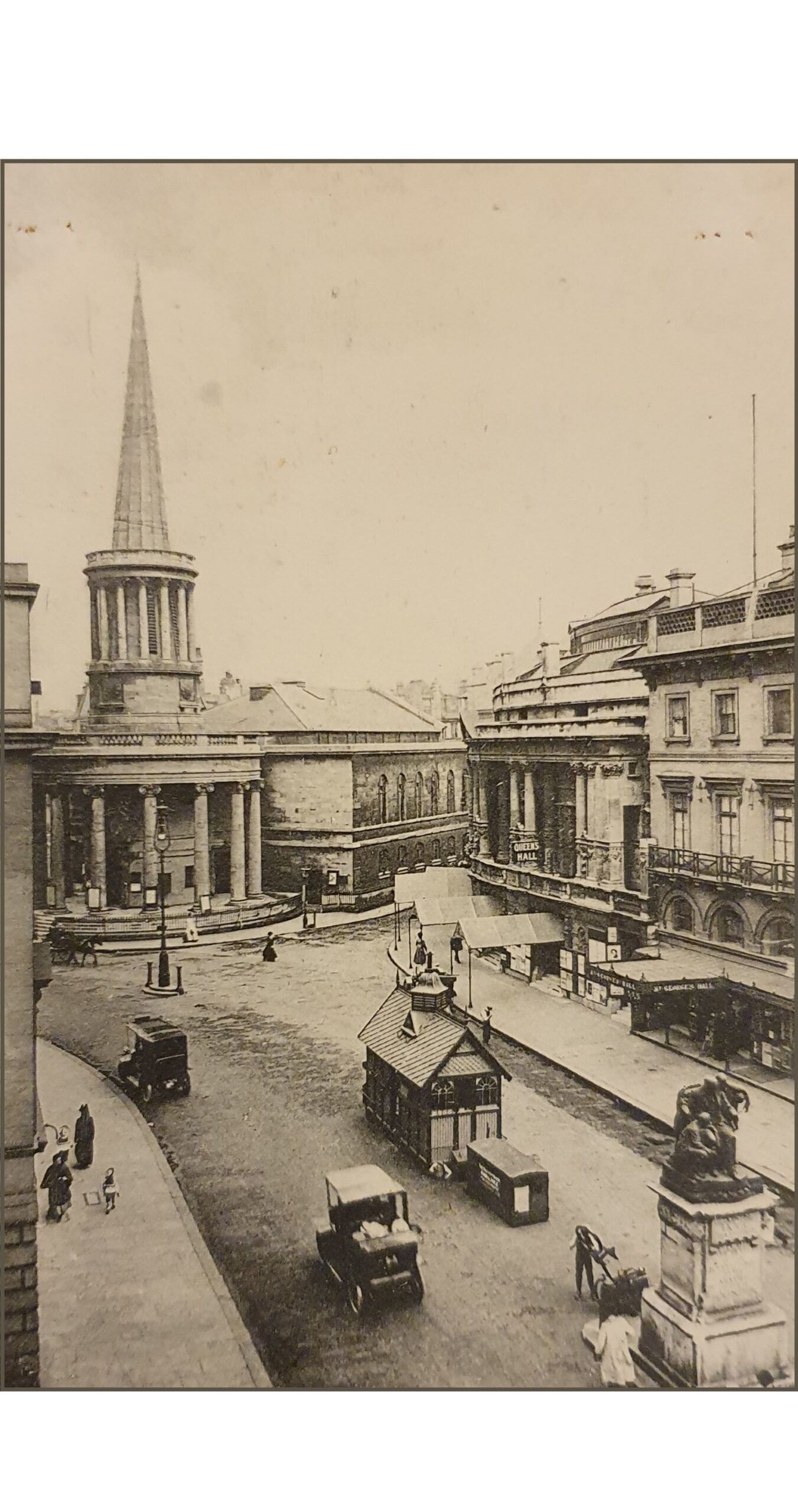
→ One of the lost 48. The Langham Place shelter, built in 1886, appears here c.1910 in what seems to be a two-tone paint job featuring a lighter shade than Buckingham Green. It shows how the humble wooden hut could find itself among illustrious and imposing neighbours – All Soul’s Church in the background is by John Nash.
I can’t discover when this one was lost, but given surrounding buildings – All Souls, St George’s Hall and the Langham Hotel – were all seriously blast-damaged in the Blitz (the Queen’s Hall, centre right, was destroyed by incendiary bomb) I suspect that it was a war casualty.
Due to their method of construction, shelters have one surprising ability that contributes to their continued existence: They can be lifted up or dismantled – and moved to a more (or sometimes, sadly, less) suitable location if appropriate permission is granted. This has happened frequently. For example, the Grosvenor Gardens shelter actually began life in Hobart Place close by. The unlucky Temple Place shelter was moved in the 1960s a short distance to a less inviting pitch, simply to get it out of the way of a posh new hotel – since demolished, while the shelter staggers on. The most nomadic is surely the one now in Russell Square. It has a plaque suggesting it was paid for by Sir Squire Bancroft, a leading actor, in 1901. Bancroft has no obvious connection to Russell Square, but the explanation is simple: It was initially positioned in the middle of Haymarket, near the Haymarket Theatre Royal, where he had been actor-manager. It moved to the North East corner of nearby Leicester Square, and then – when Leicester Square was pedestrianised – to a corner of Russell Square. Still not entirely settled, it moved a further 15 metres in 2010 due to a road realignment.
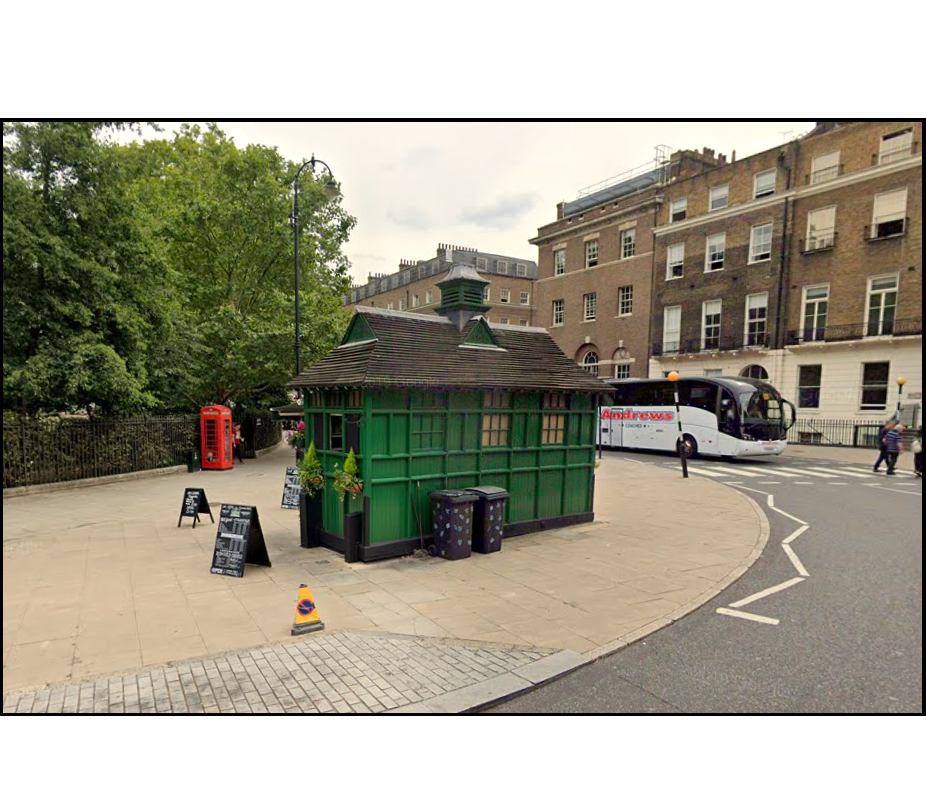
← Russell Square shelter in its current position. There is a taxi parking area, vital for the shelter’s business, out of shot to the left.
Sir Squire Bancroft is not the only example of someone sponsoring a shelter near their place of work, hoping to benefit from improved cab availability late at night. The long-lost example in Old Palace Yard Westminster, in the shadow of the Houses of Parliament, was paid for by MPs – I suspect after one too many late sittings.
Some shelters have acquired nicknames from the cabbies. The one on Chelsea Embankment was for a time referred to as the Kremlin due to the strident left-wing views of some regulars. That on Kensington Road sits in a cosmopolitan area, and was thus christened the All Nations. Thurloe Place shelter, just in front of the Victoria & Albert Museum, is not called the obvious V&A, but the Bell and Horns after a large pub situated close by, demolished more than a century ago. Showing rather less imagination, the shelter in Temple Place is the Temple. The current St John’s Wood location, Wellington Place, close to Lord’s Cricket Ground, is known as the Nursery End after the nearest section of the ground.
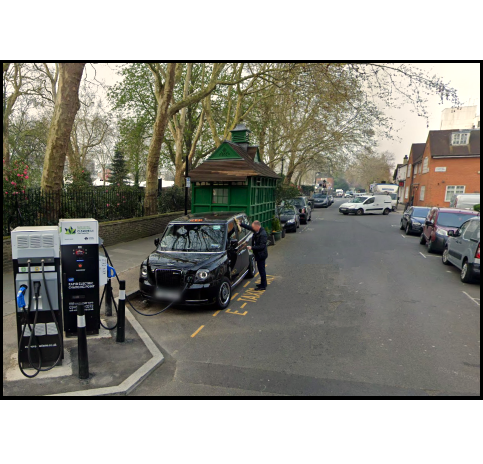
→ The Nursery End , with the low white buildings of Lord’s just visible behind the trees. On the left are the recently installed charging points for the new hybrid-electric London cab, the less-than-poetically named LEVC TX. This is surely an essential addition to all sites, and could tempt more cabbies to use them.
Pity the poor Kremlin, which closed after it lost all nearby taxi parking and was not moved to a better location. Rumour has it that this shelter may end up making a slightly longer journey – to the London Transport Museum depot in West London to become an exhibit. Action is imperative as it is rapidly falling into dereliction. Using it as a museum cafe – thus allowing non-cabbies to have a mug of tea inside one of these iconic structures – strikes me as a splendid idea.
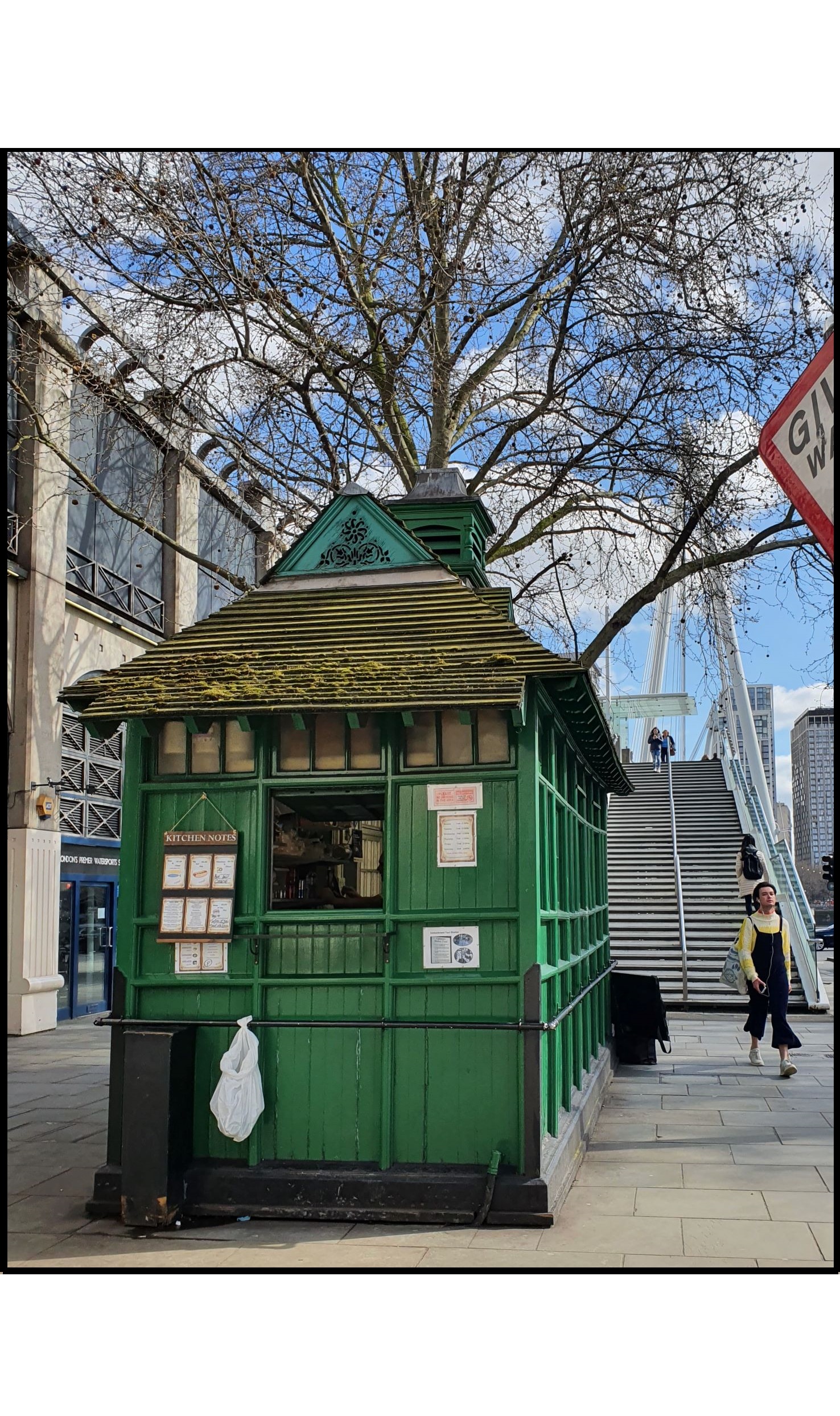
← Contrasting with the closed and decaying Kremlin further along the banks of the Thames at Albert Bridge, the well-positioned Embankment shelter close to busy Embankment station and the Golden Jubilee bridges is happily open for business. A rail for tethering horses, here painted black, is visible at about waist height and features on most surviving shelters.
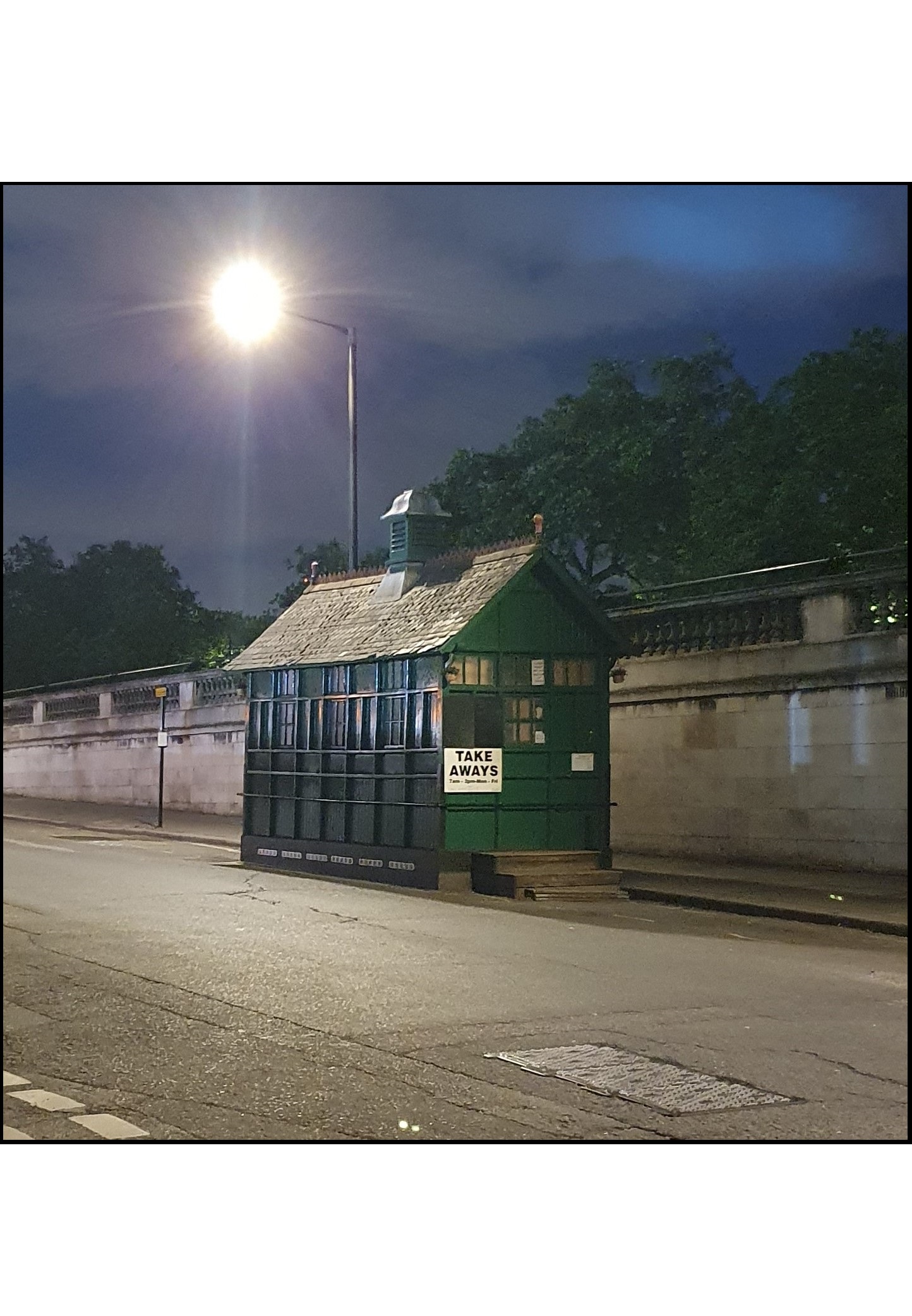
→ The deserted Temple, waiting patiently under a street lamp for the morning that may bring some customers. This is the furthest east of the surviving shelters, and its struggles prove the affluent West End is where cabbies prefer to ply their trade.
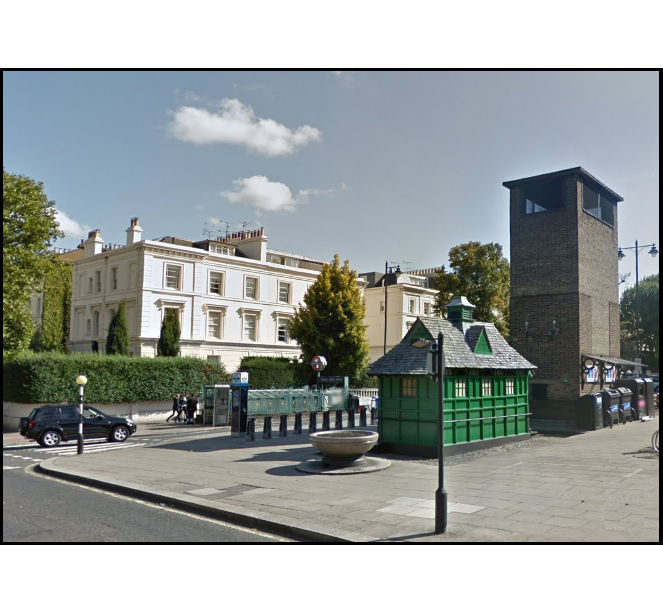
← If it wasn’t for the ugly station vent, the Warwick Avenue shelter next to the tube station of the same name in the heart of Little Venice would be in a perfect setting. It must pick up some significant passing trade; according to the BBC, this includes ‘modfather’ Paul Weller.
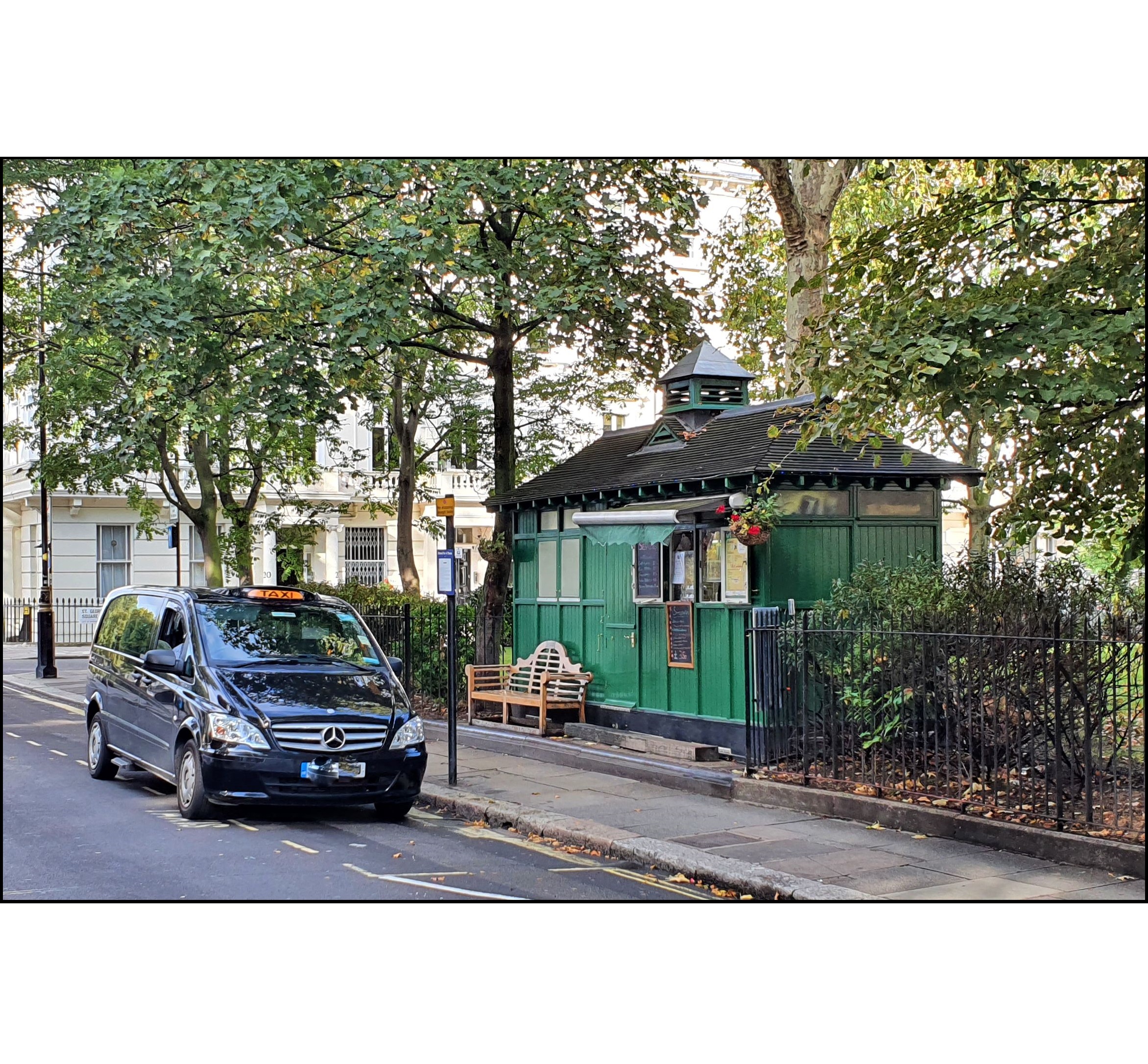
→ St George’s Square, Pimlico. Here, the ‘off-sales’ window is in the side, not at the end as is the case with Embankment and Temple. This shelter is also bereft of its tethering rail.
The CSF is still functioning almost 150 years after its inception, now as a registered charity, but its income is moderate – just £109,000 in 2019. It still owns the shelters, is responsible for upkeep and maintenance, and for issuing annual licences to those who run them. The licensees don’t get a salary from the CSF, instead making all their income from food and drink sales. The shelters’ listed status means restoration is difficult and expensive. The Heritage of London Trust have underwritten the renovation of all but two of the 13 survivors, which costs around £25,000 each. With many shelters operating in quiet upmarket residential areas, the inevitable restrictions on opening hours severely limit income – most only open for the morning and lunchtime. The coronavirus will have compounded their problems; by their very nature the cramped cafes must be almost unusable.

← Those who contribute significantly to a renovation project get listed on plaques affixed to the relevant shelter. A strange mix of parties donated to the restoration of the Embankment shelter, including author Jeffrey Archer and a charitable trust set up by the brother of Lawrence of Arabia.
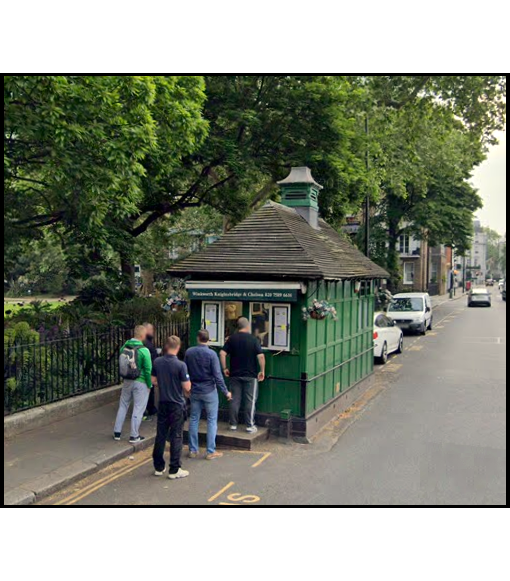
→ To make ends meet some licencees adopt unusual strategies. The Pont Street shelter in exclusive Knightsbridge has sold advertising space on an awning to an estate agent. The St Johns Wood shelter has hosted music gigs, and the long-lost Piccadilly shelter supposedly hosted aristocratic Champagne parties in the 1920s.
As for their quaint looks, pseudonymous cabdriver ‘Gibson Square’ writes that they look like a cross between a cricket pavilion and a large garden shed. Personally, I think that from some angles they look worryingly like old-fashioned public conveniences.
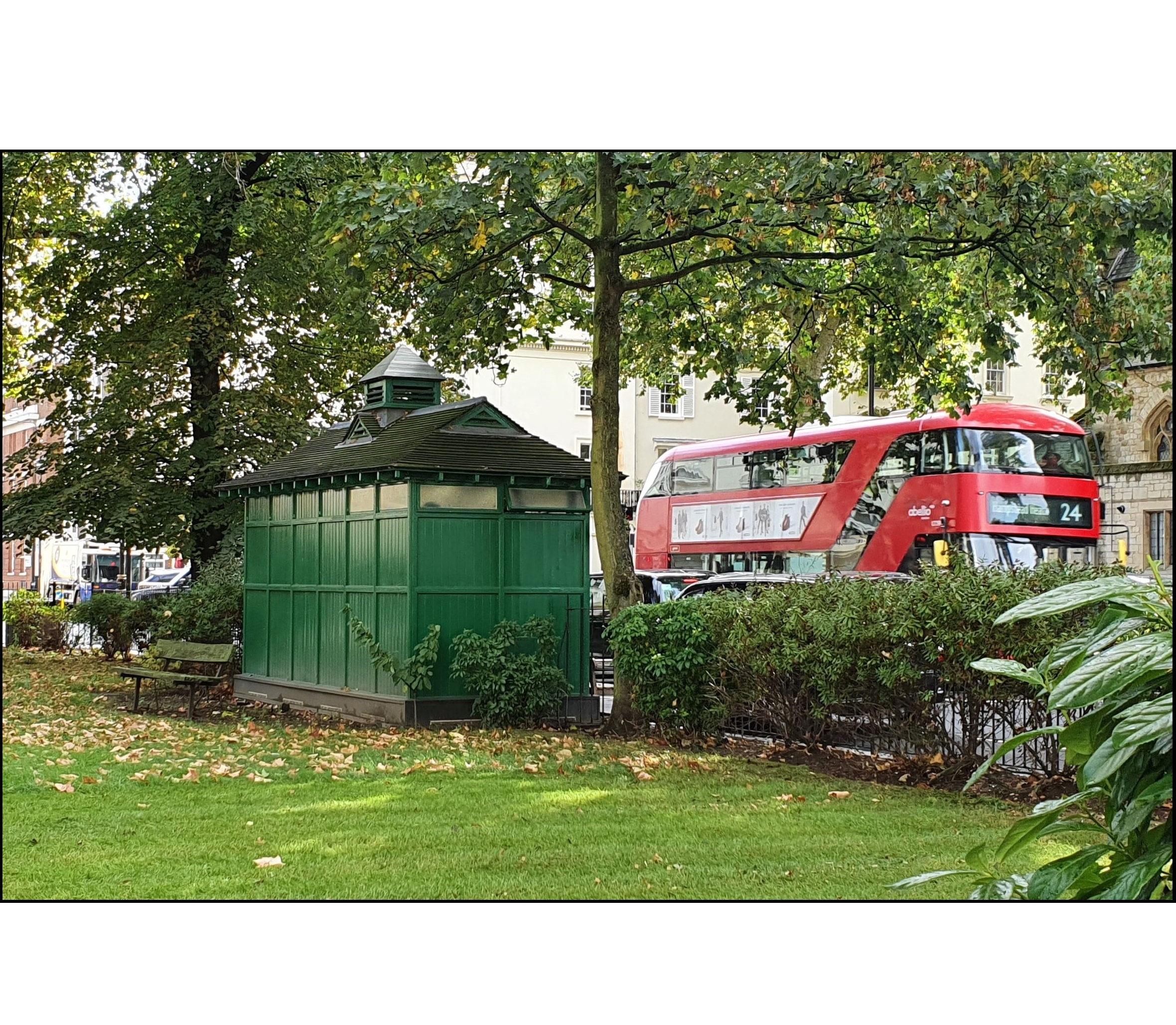
← The St George’s Square Shelter from behind, looking distinctly lavatorial. I wonder how many people have rushed in and found themselves staring at cabbies eating breakfast instead of the expected cubicles/urinals. Ironically, unlike public cafes, the shelters aren’t required to have toilets as it would be pretty much impossible to fit them. As it is, cat-swinging is a complete no-no.
Although usually closed to the public, some of the shelters are open to visitors on the ‘Open House’ weekend in late September each year. And you can send some business their way by buying ‘to go’ at a shelter window, or donating to the CSF charity. This may be their greatest hour of need.
Nearest Stations for each of the surviving shelters are as follows. Note that all have restricted opening hours. The public are only allowed to use the outdoor serving hatch.
Selected Bibliography:
Credits:
Comments are closed.
Hi Mark and thanks for the link.
My understanding of the moniker given to the ‘All Nations’ shelter is so named due to the Great Exhibition of 1851 attended by representatives from around the world.
Love the site’s design, especially the changing background picture.
Good luck with your enterprise
That’s interesting – I’ll have to do some more research! Thanks for the kind words.